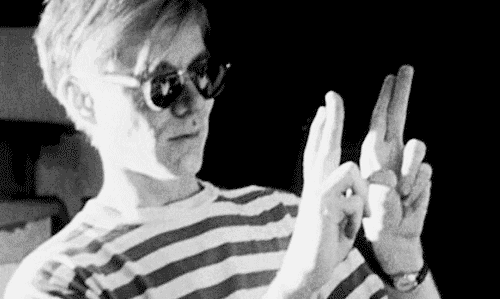
‘More talked about than seen, more emulated than admired, Andy Warhol’s films will probably survive as legends rather than as living classics that people will want to see again and again. Currently, there is a fairly broad consensus that he is among the most important, provocative and influential filmmakers of the sixties. To the general public, he is best known as the originator of the marathon motionless movie, whose petrified camera dutifully records an inactive image, and as the purveyor of voyeuristic nudity, obscenity, homosexuality, transvestitism, drugs and various other X-rated activities.
‘But to art and cinema connoisseurs Warhol has scored many conceptual coups and stylistic innovations: some see him as a “primitive” who has taken cinema “back to its origins, to the days of Lumiere, for a rejuvenation and a cleansing” (Jonas Mekas); others see him as an especially gifted recorder of “the seemingly unimportant details that make up our daily lives” (Samuel Adams Green). A lot has been made of how scrupulously he records ordinary events “as they are,” and of his beneficent inclination to let his performers just “be themselves.” Finally, there has been a great deal of emphasis on his equation of real-time with reel-time – if it takes a man three minutes to eat a banana, that slice of life is filmed and projected for three minutes without cuts. But far from being literal transcriptions of reality, Warhol’s films are more inventive, artificial and art-directed than some of his admirers would like to believe.
‘Warhol made his debut as a filmmaker with fortuitous timing. Being familiar with avant-garde painting, sculpture, music and dance, he was able to approach film with a broader and more sophisticated outlook than was available to most “underground” filmmakers. Some of his initial experiments in 1963 were with single-frame shooting (photographing one frame at a time with a hand-held camera) a stylistic technique already employed by several independent filmmakers, such as Stan Brakhage, Gregory Markopoulos and Taylor Mead. But he soon realized that long takes were the antithesis of what was by then an accepted convention and so he began making “motionless” movies. Bringing movies to a standstill had less to do with investigating the fundamental nature of film than it had to do with the exploration of a then-emerging esthetic – the Minimalist esthetic. He had already experimented with monotony in paintings made up of images identically repeated in regimented rows; and his Minimalist inclinations were reinforced by his awareness of several musical works: John Cage’s notorious “silent” composition, 4’ 33″; La Monte Young’s “eternal” drone music; and the eighteen-hour performance in 1963 of Erik Satie’s Vexations, an eighty-second piano piece repeated 840 times.
‘The first phase of Warhol’s quasi-fantastic vision was of a spaced-out, slow-motion world in which people really do sleep eight hours, while others devote nearly as much time to such lethargic inactivities as eating a mushroom or smoking a cigar. This is a silent world, rendered in contrasty black-and-white, and stripped of any incidental interest and climax. It is usually inhabited by a single performer, seen frontally and in close-up, whose luxury and torment it is to while away an eternity of time on some simple, relatively meaningless task. The camera is stationary, the image seldom varies within the frame, and any movement, action or facial expression is decelerated to such a sluggish pace that it begins to exert a trancelike effect on the viewer – who, like the person on-screen, feels victimized by torpor. The effect is of a microscopic detail that is senseless in itself but acquires significance through magnification and persistence. Staring at the immobile and inexpressive face on screen, the viewer may think of all the worthwhile things he should be doing instead of sitting here bored out of his mind. Suddenly, the face on screen is charged with melodrama; the performer has uncontrollably blinked or swallowed, and the involuntary action becomes a highly dramatic event, as climactic in context as the burning of Atlanta in Gone with the Wind. (Warhol once said his best actor was someone who blinked only three times in ten minutes. Question: Aren’t you confusing blinking with acting? Warhol: Yes.)
‘The notion of introducing stillness to movies was a radical idea. No one had to see Sleep to be provoked by the very concept of such a movie. The fact that Warhol’s early films are still talked about more than they are seen can be interpreted as their strength, demonstrating the power of the idea, or as their defect, suggesting they do not transcend the idea. However, anyone who has actually sat through the films knows how words fail to convey the experience. Consequently it would be wrong to say that Warhol’s films are so conceptual that they can be adequately described or experienced in words.
‘After the outraged reception of Sleep, Warhol deliberately set about filming movies of exaggerated length. In most movies, time is compressed so that lengthy activities appear of much shorter duration; but in a Warhol movie, inconsequential activities are prolonged so that the minutes seem to drag like days. To begin, with, the duration of the filmed action was totally artificial. Who in his right mind spends forty-five minutes eating a mushroom? Warhol instructed his performers to remain as motionless as possible, and to prolong their actions as long as possible. To stretch out the time even further, Warhol frequently films the scene at sound speed (twenty-four frames per second), then projected it at silent speed (sixteen frames per second), so that whatever movement the image might be capable of was shown in protracted slow motion. “When nothing happens, you have a chance to think about everything,” Warhol explained.
‘The second phase of Warhol’s vision began in 1963, when he started experimenting with sound, color, camera movement, action, narrative and editing. In this phase, the performers became interesting as personalities. Warhol presented a highly selective gallery of gorgeously gaunt, stylishly garbed and imaginatively barbered young men and women who languorously display themselves, but seem reluctant to put their often appealing bodies to any constructive or even self-satisfying use; they spout tedious monologues, as if unwinding from some pent-up paranoia that can be dispelled, or maintained, only through the recital of all their problems, past and present. These sometimes droll, sometimes pathetic monologists seem quagmired in unsatisfactory roles or situations, and apparently the only way they can sustain their gossamer fantasies is by trying to convince us of their veracity. But their self-image is askew and, like some manic individual striving to keep a grip on reality, they maintain an obsessive stranglehold on their only audience – the camera. Their whole world threatens to slide into oblivion at any moment, and even the riveting gaze of the camera cannot seem to secure it.
‘The manufactured chitchat and confessional soliloquies seem endless. During the screening of Sleep, members of the audience sometimes ran up to the screen and yelled in the slumbering man’s ear: “Wake Up!” The interminable chatter in the later movies makes people want to scream: “Shut up!” But suddenly, the interminable story trails out in mid-sentence, just a few words before the possible punch line, as the over exposed and lank end of the reel passes through the projector. We are left wanting to know the conclusion of the monologue we could not bring ourselves to listen to. We are made to feel the regrettable transience of what had seemed an excruciating boring scene. Those ridiculous people with their tiresome sagas emerge in retrospect as poignant creatures who deserved more of our sympathy and attention.
‘The feeling of impermanence is one of the strongest impressions left by Warhol’s films. No matter how static the image, no matter how lengthy the monologue, no matter how tedious and unendurable the movies seem while we watch them, we are left with a sense of their brevity.
‘Even the physical record of Warhol’s cinematic achievement is beginning to look impermanent. From 1964 through 1967, Warhol’s film production was prodigious. Scores of movies were shot, but entire reels and projects were abandoned, and only what was felt to be successful was publicly shown. No authoritative record was ever kept of titles, dates, number of reels, cast and collaborators. Reconstructing the data now is largely a matter of guesswork, although a few attempts have been made to catalogue the oeuvre. The studio film library presently consists of miscellaneous cans of prints randomly stacked in steel cabinets at the rear of the Factory. (Warhol has put the original films in storage, where they are probably in even greater disorder.) Nevertheless, many of the films have been damaged, or have totally vanished; even the original print of Sleep is missing. In other cases, such as the twenty-five-hour-long **** (Four Stars), cans of films are present, but nobody has any idea in what sequence they were originally shown. The casual attitude toward shooting the movies carried over into their projection. Even in regular screenings at commercial theaters, the reels were inexplicably jumbled, or one reel was deleted from one showing but not the next, leading to such wholesale variations that some reviewers began citing the date and hour of the performance they had attended. It is unlikely that very many of the films will ever be accurately reconstructed as they were originally screened – which is symptomatic of the “benign neglect” with which Warhol treats all of his work.
‘From the beginning, Warhol was a shrewd and canny photographer who knowingly got the effects he wanted. He expended considerable thought and effort on the proper lighting, angle and setup. In the early movies, he favored strong sidelighting with harsh shadows, and most often concentrated on the frontal image (the most informative and iconic angle), which he centered and tightly framed. Once he had a satisfactory setup, he could turn on the camera’s motor and walk away. Later he experimented with zooms and pans. “His zooms are perhaps the first anti-zooms in film history,” according to to Andrew Sarris, for whom “Warhol’s zooms swoop on inessential details with unerring inaccuracy.” They seldom correspond to any ostensible narrative or presumed story-line, and seem deliberately inattentive to the on-screen action, often missing significant moments. During the shooting of one scene of Lonesome Cowboys in Old Tucson, Viva was nearly urinated upon by her antagonist’s horse and then, losing her footing in the mud and falling against the hind legs of her own horse, nearly trampled upon. Warhol missed both events because he was zooming in on a storefront sign across the street.
‘The sound in Warhol movies, though steadily improving, is still below professional standards. Warhol claims that the bad sound was at first done deliberately, because clear sound was too expensive. More likely, good sound was never really considered a desirable virtue. When Sleep was first shown, the accompanying sound was provided by two transistor radios on stage, tuned to different rock stations. When Warhol was invited to show four films at the 1964 New York Film Festival, he commissioned La Monte Young to compose a taped soundtrack that could be used for all four – the droning sound of a bow being played over a brass mortar. Now that Warhol turns the camera off and on during a sequence, he does it without regard for what the performers are saying, so that dialogue is arbitrarily punctuated and blipped without concern for content.
‘At first, Warhol refused to do any editing. Entire reels might be deleted, but there were no internal cuts within a reel. All the reels were spliced together, end-to-end, including the blank film leader, so that the image was interrupted every three minutes or so by over-exposed reel ends, and then flashes of clear light, which became a kind of dynamic interlude between sections of the static image, giving a sense of structural rhythm to the film. Later, he began turning the camera off and on during a sequence to make the film look cut and also, he says, “to give it texture.” Purists, who admire the unedited reality of early Warhol, are distressed that he now stops the camera. “Since everyone says I never stop the camera,” Warhol said, “I stop it now, start and stop, and that makes it look cut.” To make certain it looks cut, he does not splice out the frames of blank film between scenes that a professional filmmaker would delete. Consequently, when the movie is shown, there are intermittent white flashes, accompanied by a screech on the soundtrack. The strobelike effect has been dubbed the Warhol “strobecut,” although technically it is not a cut at all. Like the zooms, the strobecuts do not necessarily relate to anything at all on-screen, but they often make us suspect something has been deliberately eliminated or censored. For the past few years, real editing has been performed on Warhol films in a attempt to make the movies faster-paced and more entertaining.
‘Over the years, scores of people have contributed their ideas and services to Warhol’s movies. In addition to being unusually receptive to other people’s suggestions and talents, Warhol has always demonstrated an unstinting willingness to let others collaborate with him. The most enduring and therefore most important collaborator is Paul Morrissey, an independent filmmaker until he joined forces with Warhol in 1965. Morrissey served as executive producer, scriptwriter, editor, one-man crew and business manager, and in 1968 began making his own movies under the aegis of Andy Warhol Films, Inc. Morrissey’s influence on Warhol productions has been stabilizing and conventionalizing. Under his guidance, there has been a greater emphasis upon narrative (erotic stories with “redeeming social value”), technically competent camera work and sound, better-paced editing – and more routine ambitions. Morrissey’s own films, Flesh and Trash, are slick, formularized versions of Warhol’s films – but more professional, and more entertaining. Both Flesh and Trash have achieved commercial success.
‘”My influence was that I was a movie person, not an art person,” says Morrissey. “An art person would have encouraged Andy to stay with the fixed camera and the rigid structure. Andy’s form was extremely stylized, and people though the content was very frivolous. My notion was that the content is what is said by the people and how they look. The emphasis now is less or very minimally on the form and all on the content. And of course modern art is completely concerned with form and the elimination of content. In that sense, Andy is completely against the grain of modern art, and more in the tradition of reactionary folk art. You can only be a child so long and be revolutionary, and Andy served his apprenticeship as a revolutionary in the art world and in the movie world. But it’s pathetic to see a person not develop and not grow.”
‘Although schematic plot outlines are usually decided upon in advance, Warhol’s performers are expected to improvise their own dialogue. “Professional actors and actresses are all wrong for my movies,” says Warhol. “They have something in mind.” According to Morrissey, it is television that has eliminated the necessity of speaking written lines in front of the camera. He marvels that movie actors are able to speak freely on television talk shows, yet freeze before a movie camera because they are unaccustomed to working without a script. There is complete unanimity in the Warhol company that performers should be capable of making up their own lines. “How can people read other people’s words?” Warhol asks. “It sounds so phony.” Morrissey, who is more doctrinaire, declares, “If an actor can’t make up his own lines, he’s no good.” Viva, a supreme monologist who describes herself as “the last dying gasp of verbosity,” reminds listeners that “Mae West also wrote her own lines.” As Viva puts it: “Men seem to have trouble doing these non-script things. It’s a natural thing for women and fags – they ramble on. But straight men are much more self-conscious about it.”
‘It is sometimes assumed that Warhol simply pushes people in front of the camera and “lets them be themselves.” This impression is seemingly corroborated by his statement quoted by Gene Youngblood: “I leave the camera running until it runs out of film because that way I can catch people being themselves. It’s better to act naturally than to set up a scene and act like someone else. You get a better picture of people being themselves instead of trying to act like they’re themselves.”
‘But very few people manage to be “themselves” in front of a camera. Warhol lets his performers be “themselves” in roles that correspond to their own characters. He selects people whose looks and personalities almost – but not quite – coincide with the characters he wishes to create. Most often, it is the discrepancies in the the behavior of a person trying to impersonate someone similar to himself that register most vividly. Warhol has a ringmaster’s ability to make his egocentric superstars expose their private selves. But his most diabolical ploy comes into effect when he deliberately goes one step too far, by asking the performer to do something that the performer thinks is degrading or contrary to his nature – for instance, getting slapped around, or fondling someone of the opposite sex.
‘”People always think that the people we use in our films are less than something,” says Morrissey. “Actually everybody we use has to be a thousand times extra to stand up to our kind of filmmaking. Our people are more than actors..”
‘Perhaps the only viable generalization that can be made about Warhol’s people is that they do not represent a broad cross-section of Middle America. The range of personality types is surprisingly narrow, and apparently conforms to certain Factory stereotypes. The male roles generally fall into three groups: (1) handsome brutes with splendidly faceted face planes and good muscular definition (Joe Dallesandro, Louis Waldon, Tom Hompertz); (2) raunchy but comical homosexuals who talk as if they had ravenous appetites for sex and drugs but look physically incapable of obtaining either (Taylor Mead, Ondine); and (3) transvestites (Mario Montez, Candy Darling, Holly Woodlawn). The female roles are only slightly more typical: (1) idealized, immaculate beauties who do not have much to say (Nico, Edie Sedgwick); (2) bawdy beauties who talk too much (Viva, Jane Forth); and (3) overweight and overstimulated grotesques (Brigid Polk, Lil Picard, Tally Brown). Most of the characters depicted in Warhol’s movies exist on the fringe of society, being societal dropouts or rejects who go on having middle-class values and aspirations. They are not even good at what little they can do. The best-looking men tend to be impotent, and the best-looking women had trouble bedding any man at all. And the transvestites are tacky, with make-do hairdos, runs in their stockings and no falsies.
‘Often condemned for advocating nudity and homosexuality in his movies, Warhol now finds himself scorned by a younger generation which demands even more sexual liberation. He has managed to antagonize both the Women’s Lib and Gay Liberation movements, which lump him among their many reactionary foes. According to Morrissey, “Andy is despised by Gay Liberation and the Women’s Revolt, whatever it is, because Andy just presents it and doesn’t take a position. An artist’s obligation is not to take a position ever, just to present. Andy’s basic position on every subject, if he has any, is comical. The absence of a position necessitates a comical attitude to make it bearable. And the most serious position a person can take is the frivolous position.”
‘Warhol recently completed a film on the subject of Women’s Lib that will not endear him to that movement, because the cast is comprised almost entirely of transvestites, at least one of which impersonates a lesbian. Around the Factory, this role reversal is considered quite amusing. “It’s hard for Andy or any of the female impersonators to put down the movement,” says Morrissey, “because it’s a subject that neither Andy nor any of the female impersonators have the vaguest notion about. I don’t know anything about it either. I hear a little bit about it on the talk shows – equal pay, etcetera, blah blah. But the logical extension of what they obviously want is to be a man, so why not have men represent them?”
‘Warhol’s interest in film appears to be fading: he is less productive and his few film projects are less ambitious. It is difficult to determine whether his present lethargy is a temporary rest period, or a lasting consequence of the monstrous murder attempt of 1968. He exhibits almost none of the creative drives and ambitions that motivated him before he was gunned down. Despite his camerawork on Blue Movie and the unreleased Women’s Lib movie (the last films he has photographed himself), he increasingly presents himself as an executive producer, a remote movie mogul whose chief interest is the supervision of an efficient and profitable production company. (Jed Johnson, an intensely quiet young man from California, who has worked at the Factory for three years, now edits and photographs some of the new films.) But when Warhol is not gloating over his supposed retirement from active movie-making, he makes vague murmurs about wanting to do something experimental again.
‘For a few years in the mid-sixties, Warhol displayed such incredible energy, produced so many paintings, sculptures and movies, that it seems almost unreasonable to expect more from him. From 1964 to 1967, he went through a rapid turnover of cinematic styles – from the stately Giottoesque stability of the early films, to the baroque superimpositions of the middle period, to the episodic sex narratives that culminated in the suppressed Blue Movie. In his early films, Warhol deliberately innovated certain conventions for extending and redefining our notion of reality through his unique treatment of the duration of time. But to my mind, the later works are more vibrant, intellectually more challenging and visually more satisfying. His camerawork reached a creative height in **** (Four Stars) with superb color photography and brilliant in-camera editing that he has not yet surpassed.
‘It is a tribute to his originality that his films have had an overwhelming effect upon an entire generation of younger experimental filmmakers, and that they have also had an influence upon such strongly individualistic filmmakers as Jean-Luc Godard, Agnes Varda, Norman Mailer and Shirley Clarke. But more important than the matter of influences is the fact that from the hundreds of reels that passed through his camera there emerged so many dazzling images and memorable scenes – a fragmentary but nonetheless valuable contribution to cinematic art.’ — David Bourdon
____
Stills
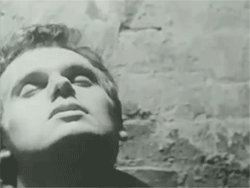

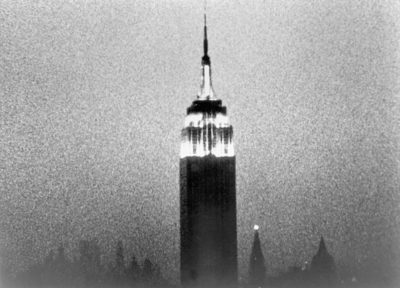

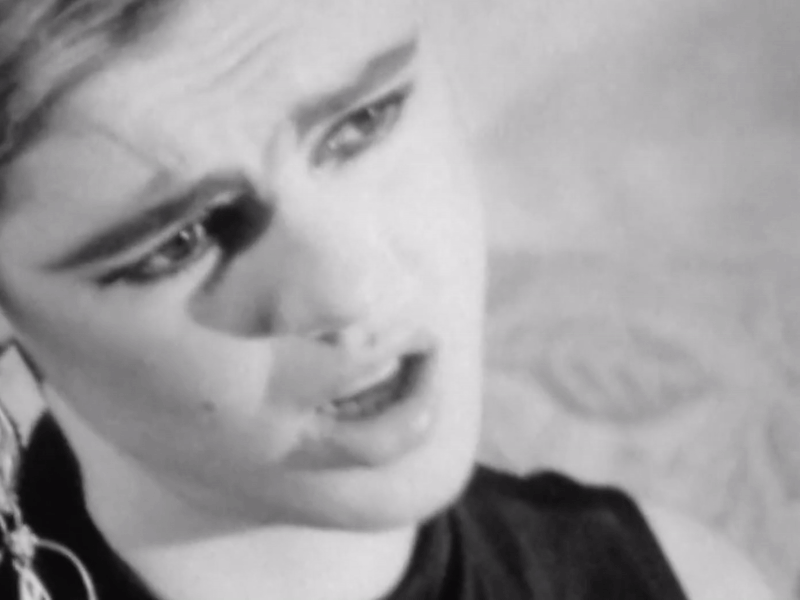
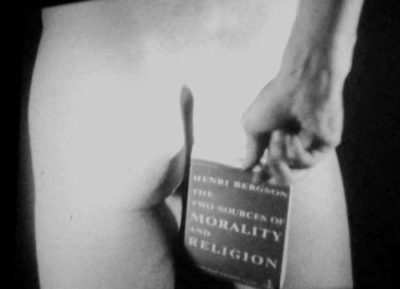
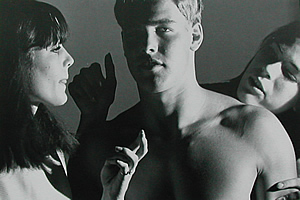
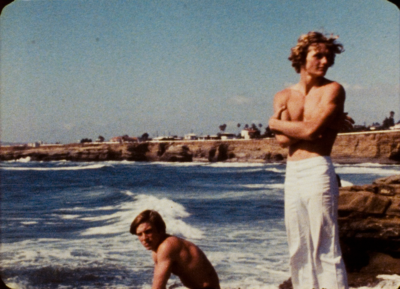
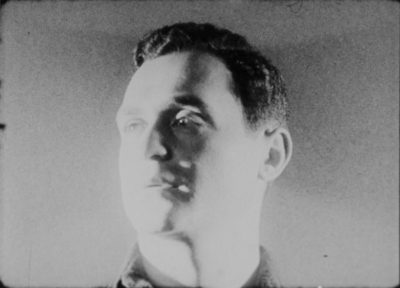
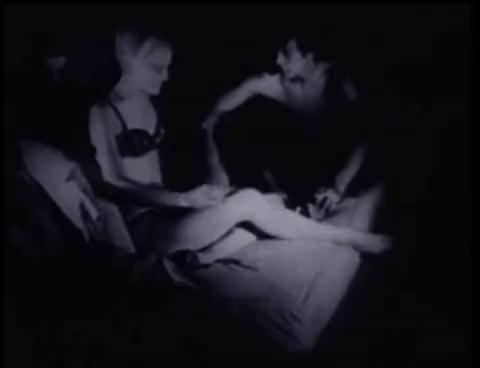
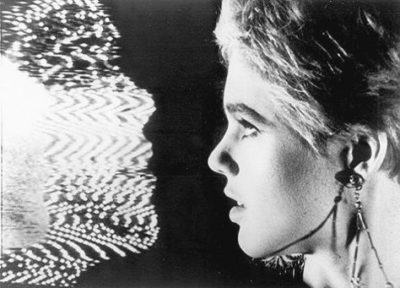
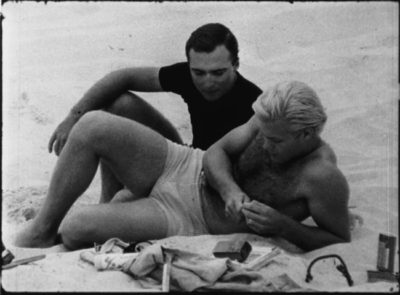


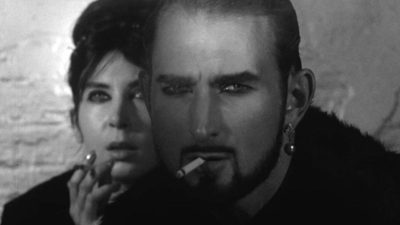
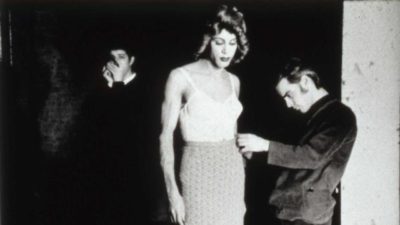
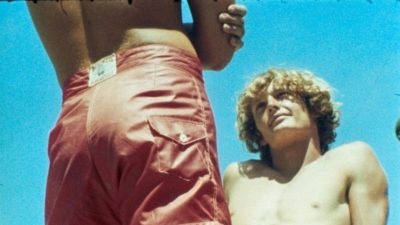
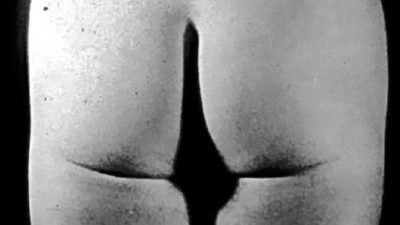
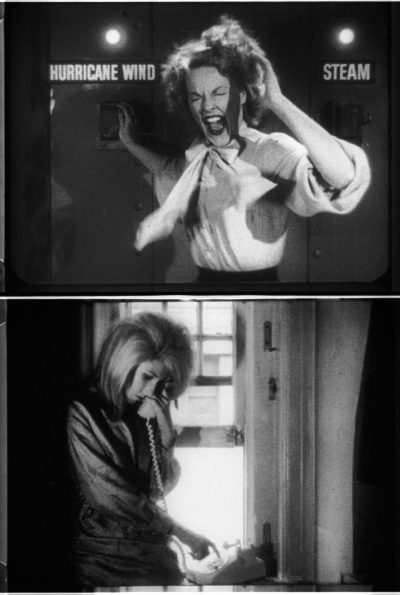

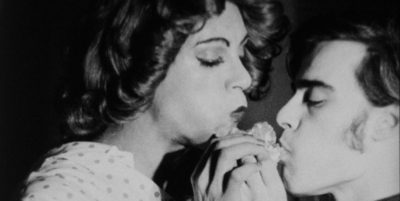
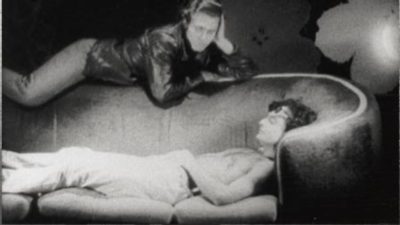



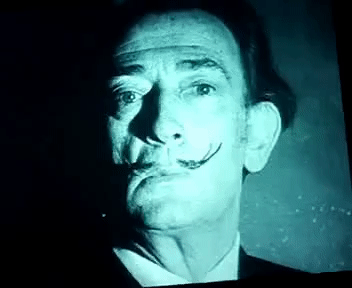
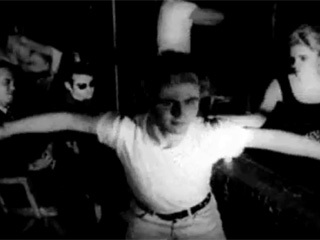
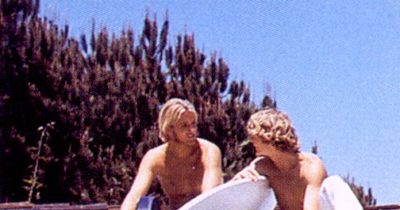
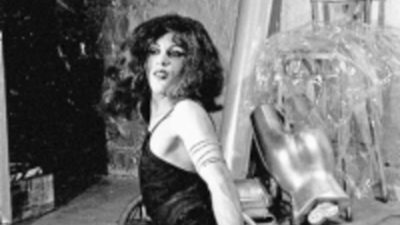

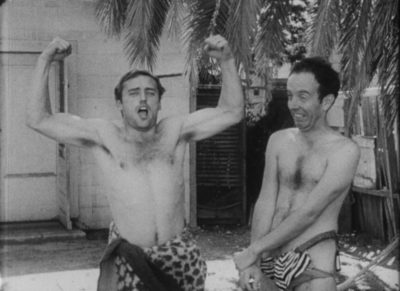
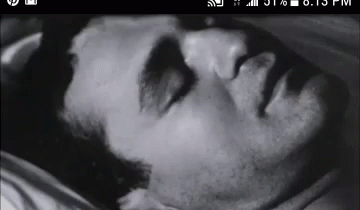


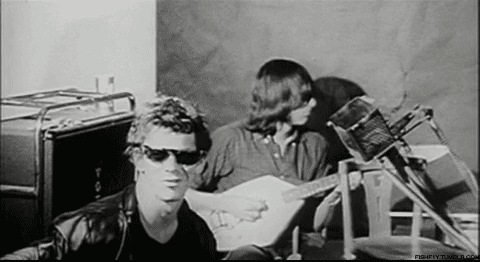

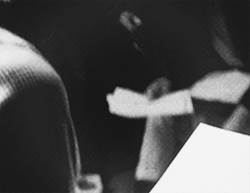
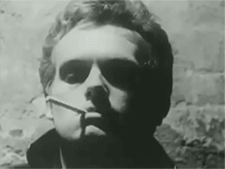
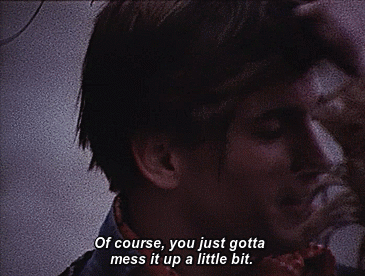
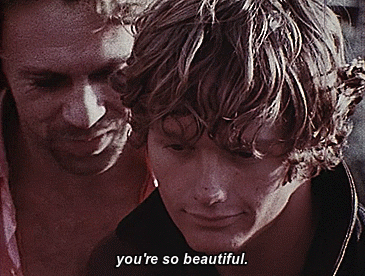
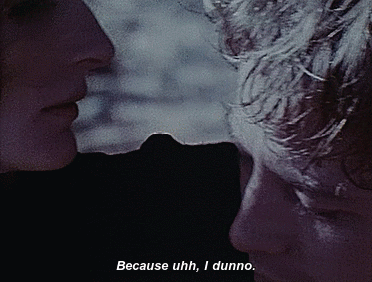








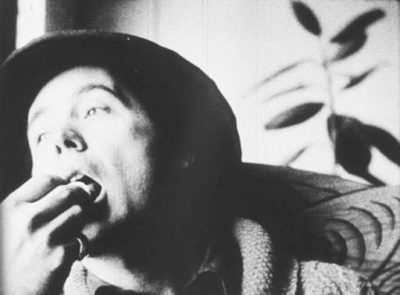
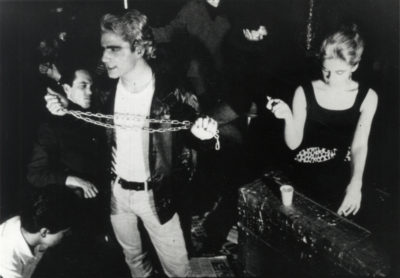

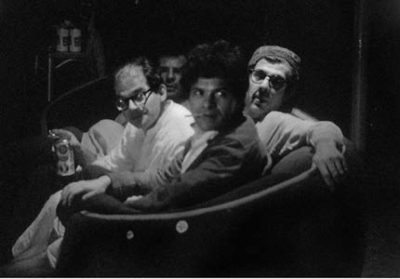
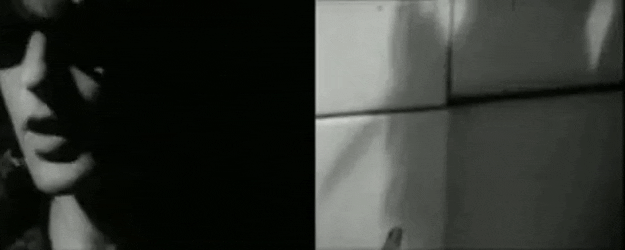
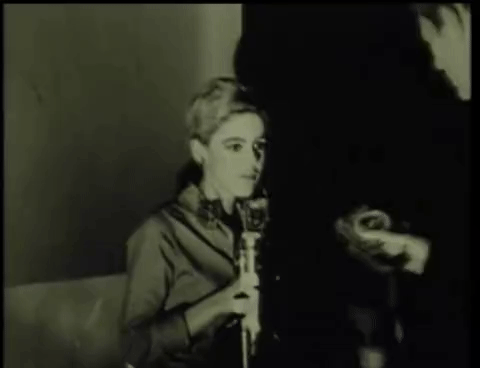
____
Further
Andy Warhol @ Senses of Cinema
Andy Warhol Made Hundreds of Movies During His Career. Here Are the 9 That Changed Film History
Andy Warhol, Filmmaker Without Qualities
The man who got Andy Warhol into filmmaking
Andy Warhol @ IMDb
A guide to Andy Warhol’s films, from personal shorts to …
andy warhol as filmmaker
6 Filmmaking Tips from Andy Warhol
Early Exposure: The First Films of Andy Warhol
Book: The Black Hole of the Camera: The Films of Andy Warhol
THE RELEVANT QUEER: Artist, Filmmaker & Producer Andy Warhol
Jonas Mekas: The Making of Andy Warhol’s ‘Empire’
Andy Warhol interviews Alfred Hitchcock!
Andy Warhol Films Go Digital
A Little About Andy Warhol’s Films
Boredom Revisited, or How Andy Warhol Predated Slow Cinema
THE UNBEARABLE DURATION OF ANDY WARHOL’S FILMS
_____
Extras
Unproductive Time in Andy Warhol’s Films
The Life of Andy Warhol
Vous avez vu les films d’Andy Warhol ? – Blow up – ARTE
_____
Interview
by Roger Ebert
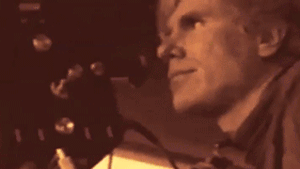
Andy Warhol forgot to come to Chicago again Thursday. “It’s a funny thing,” the pop artist and underground filmmaker said. “It’s like I keep forgetting to come to Chicago.”
Warhol was supposed to spend Thursday through Saturday here promoting the opening of his movie, “Chelsea Girls,” at the Town Underground Theater.
Warhol is the artist who created the Pop Art movement out of paintings of Campbell Soup cans and Brillo boxes.
In the last two years he has moved to underground movies, including “Sleep,” an eight-hour study of a person sleeping; “Empire.” a day-long study of the sun’s shadow moving across the Empire State Building; and “Mario Banana,” in which an actor named Mario Montez eats a banana.
“Chelsea Girls” is a four-hour film using a split screen to show simultaneous action in various rooms of the Chelsea Hotel in New York City.
His agent promised that Warhol would bring along Ingrid Superstar and Nico, two of the leading players in the movie. They were supposed to arrive late Wednesday night or Thursday morning.
“We kept getting these calls saying Andy was coming, Andy was on his way, Andy was rounding everybody up,” said John West, a spokesman for the Town Underground.
“I spent all night at O’Hare, meeting every plane – but, no Andy.”
Warhol’s agent, Lester Pierske, told The Sun-Times Thursday he guessed Andy just didn’t get around to catching a plane.
A call to Warhol reached him at The Factory, which is the name of the New York Studio where he paints and films.
“Oh, yeah,” he said. “Chicago, I guess I just forgot. I have all of these things to do, see. I’m making this full-length feature called ‘Since.’ which is going to be 25 hours long. So you can see there’s a lot of work involved in it, and I really wanted to get it finished this weekend.”
Warhol was reminded that he also failed to show up in Chicago last September for the opening of his”Exploding Plastic Inevitable.”
“Yeah, I guess I did at that,” he said. “We had just come back from California and everything was…”
His voice drifted off.
What about Nico, the blond actress who has been romantically linked with him?
“Oh, Nico would love to come to Chicago,” Warhol said.
“Do you think I should send her? She’s out in Monterey at the folk-rock festival. I was just talking to her.”
And what about Ingrid Superstar?
“She’s right here,” Warhol replied. “Say hello, Ingrid.”
____________
20 of Andy Warhol’s 104 films
________
Eat (1963)
‘Eat (1963) is a film created by Andy Warhol and featuring painter Robert Indiana, filmed on Sunday, February 2, 1963 in Indiana’s studio. It is filmed in black-and-white film, has no soundtrack, and depicts fellow pop artist Indiana engaged in the process of eating for the entire length of the film. The comestible being consumed is apparently a mushroom. Finally, there is a brief appearance by a cat.’ — Cody Carvel
the entirety
____________
Blowjob (1964)
‘Blow Job is a silent film, directed by Andy Warhol, that was filmed in January 1964. The film depicts the face of an uncredited DeVeren Bookwalter as he apparently receives fellatio from an unseen partner. While shot at 24 frame/s, Warhol specified that it should be projected at 16 frame/s, slowing it down by a third.’ — dm
the entirety
__________
Sleep (1964)
‘“The first real movie I made was, I put a camera on somebody sleeping, and that’s how it all started…. It just seemed so easy to do.” That was how Andy Warhol remembered the genesis of his film called Sleep. On several nighttime visits in the summer of 1963, Warhol trained his new Bolex camera on his lover John Giorno, a gorgeous young poet who happened also to be the world’s deepest sleeper. Warhol edited his series of three-minute takes—as much film as the camera would hold—into a movie that lasted more than five hours, meant to be screened in (slightly) slow motion.’ — The Brooklyn Rail
Trailer
_______________
Soap Opera (1964)
‘…Soap Opera, filmed over P.J. Clarke’s, the Third Avenue pub. It was subtitled ‘The Lester Persky Story’ in tribute to Lester, who eventually became a movie producer. Lester introduced the hour-long commercial on television in the fifties that had Virginia Graham showing you all the different ways you could use Melmac, or Rock Hudson doing vacuum-cleaning demonstrations. Lester let us use footage from his old TV commercials, so we spliced sales-pitch demonstrations of rotisserie broilers and dishware in between the segments of Soap Opera.” The TV ads have loud volume and the Warhol filmed sections are silent.’ — Djangobelize
the entirety
________________
Screen Tests (1964 – 1966)
‘Warhol’s Screen Tests are revealing portraits of hundreds of different individuals, filmed between 1963 and 1966. In these short films, Warhol created his own cache of Superstars. Superstars are actors interesting enough to carry a film on their own—not by playing a particular role but simply by being themselves. His subjects included both famous and anonymous visitors to the studio, including poet Allen Ginsberg, actor Dennis Hopper, and artist Salvador Dalí. When asked to pose, subjects were lit and Warhol filmed them with his stationary 16mm Bolex camera on silent, black-and-white, 100-foot rolls of film. Each Screen Test took exactly three minutes to create, lasting as long as the roll of film took to spool through the camera. The standard formula of subject and camera remaining almost motionless for the duration of the film results in a “living portrait.” When Warhol showed the films, he slowed them down slightly, extending their run time to about four minutes each, imparting a dreamy, slow-motion effect to the finished works.’ — Warhol Foundation
___________
Empire (1964)
‘Empire is a 1964 black-and-white silent art film by Andy Warhol. When projected according to Warhol’s specifications, it consists of eight hours and five minutes of slow motion footage of an unchanging view of the Empire State Building. The film does not have conventional narrative or characters, and largely reduces the experience of cinema to the passing of time. Warhol stated that the purpose of the film was “to see time go by.”One week after the film was shot, experimental filmmaker Jonas Mekas (who was cinematographer for Empire) speculated in the Village Voice that Warhol’s movie would have a profound influence on avant-garde cinema. In 2004, Empire was included in the annual selection of 25 motion pictures added to the National Film Registry of the Library of Congress being deemed “culturally, historically, or aesthetically significant” and recommended for preservation.’ — collaged
Excerpt
Excerpt
__________
Couch (1964)
‘The couch at Andy Warhol’s Factory was as famous in its own right as any of his Superstars. In Couch, visitors to the Factory were invited to “perform” on camera, seated on the old couch. Their many acts-both lascivious and mundane-are documented in a film that has come to be regarded as one of the most notorious of Warhol’s early works. Across the course of the film we encounter such figures as poets Allen Ginsberg and Gregory Corso, the writer Jack Kerouac, and perennial New York figure Taylor Mead.’ — letterboxd
the entirety
_______________
Batman Dracula (1964)
‘Starring Warhol’s fellow experimental filmmaker Jack Smith in both title roles, Batman Dracula pits the Caped Crusader of comic-book fame against the vampiric Transylvanian count of legend, the millionaire vigilante who seems to fear nothing but bats against the immortal recluse who spends much of his time in the form of a bat. Smith may bear a faint resemblance to Christian Bale, Nolan’s Batman, but there all aesthetic resemblance to the “real” Batman movies ends. Shot in black and white on various rooftops around New York and Long Island as well as in Warhol’s “Factory,” Warhol’s unauthorized approach to the material seems to get as abstract and spontaneous as most of the cinema put together by his coterie — or at least the surviving footage makes it look that way. Though Warhol did complete Batman Dracula, he only showed it at a few of his art shows before DC Comics called and demanded an immediate end to its screenings.’ — Open Culture
the entirety
__________
Vinyl (1965)
‘“Vinyl is such a loose adaptation of the source novel that even people who have seen it should be forgiven for not realising that it is built on Burgess’s literary scaffold,” says the web site of the International Anthony Burgess Foundation. “The film is presented as a series of images of brutality, beatings, torture and masochism all performed by a group of men under the gaze of a glamorous woman. In its preoccupations with pornography and violence, it bears many of the oblique hallmarks of Warhol’s work, along with a familiar cast of Factory regulars such as Gerard Malanga, Edie Sedgwick and Ondine. The finished film is disturbing, contains unsimulated violent acts and is not very audience-friendly.” Either a strong disrecommendation or a strong recommendation, depending on your proclivities. And if none of that draws you, maybe the soundtrack including Martha and the Vandellas, The Kinks, The Rolling Stones, and the The Isley Brothers will. Did Warhol pay to license their songs? Given that he certainly didn’t look into obtaining the rights even to A Clockwork Orange, something inside me doubts it.’ — Open Culture
the entirety
______________
Poor Little Rich Girl (1965)
‘A young, jobless woman stays in bed, reads, talks on the phone, smokes cigarettes, makes fresh coffee, and tries on some clothes from a large wardrobe.’ — letterboxd
Excerpt
Excerpt
______________
Beauty #2 (1965)
‘The movie has a fixed point of view showing a bed with two characters on it, Sedgwick and Piserchio. Chuck Wein is heard speaking but is just out of view. Sedgwick is wearing a lace bra and panties, and Piserchio, wearing only jockey shorts, engage in flirting and light kissing. Wein asks Sedgwick questions seemingly designed to harass and annoy her. Piserchio is more or less a bystander not interacting with Wein. The dialogue seems created adlib and no conclusions are reached in the film. The only conceivable climax is when Sedgwick finally becomes so mad, she throws a glass ashtray at Wein, breaking it.’ — ANNA TELEVISION
the entirety
_______________
Taylor Mead’s Ass (1965)
‘Taylor Mead’s Ass is a film by Andy Warhol featuring Taylor Mead, consisting entirely of a shot of Mead’s buttocks, and filmed at The Factory in 1964. According to Watson’s Factory Made: Warhol and the Sixties, Taylor Mead had achieved a degree of fame that “inspired a backlash.” One example was a letter to the editors at The Village Voice in August 1964 which complained about “films focusing on Taylor Mead’s ass for two hours.” Mead replied in a letter to the publication that no such film was found in the archives, but “we are rectifying this undersight.” Two days later, Warhol shot the “sixty-minute opus that consisted entirely of Taylor Mead’s Ass,” during which Mead first exhibits a variety of movement, then appears to “shove a variety of objects up his ass.” The film was Mead’s last for Warhol “for more than three years”, at the end of 1964, “Mead felt betrayed by Warhol for not showing the film.”‘ — Wiki
Excerpt
______________
The Velvet Underground and Nico (1966)
‘The film depicts a rehearsal of The Velvet Underground and Nico, and is essentially one long loose improvisation. Lou Reed and Sterling Morrison play their electric guitars (Gretsch Country Gentleman and Vox Phantom respectively), Maureen Tucker plays her 3-piece drum kit consisting of a rack tom, snare drum, bass drum and single cymbal, John Cale plays his electric viola and Nico bashes a single maraca against a tambourine. Cale subsequently switches to bass and at some stage, he creates feedback on a wooden frame from a piano while Nico plays on Cale’s Fender Precision Bass. Cale soon switches back to his viola and near the end of the film, the rehearsal is disrupted by the arrival of the New York police, supposedly in response to a noise complaint. The film was intended to be shown at live Velvet Underground shows during setup and tuning.’ — Wiki
the entirety
_______________
Outer and Inner Space (1966)
‘Shot in August 1965, ‘Outer and Inner Space’ is Andy Warhol’s first double-screen film and an important transitional work, since the double-screen format was very important in his later cinema. First exhibited by Warhol at the Filmmakers Cinematheque in New York City in January 1966, it was screened on only a few other occasions in the 1960s. Outer and Inner Space had not been seen in over 30 years until it was restored by The Museum of Modern Art in New York in 1998 and premiered as an installation at the Whitney Museum of American Art in October 1998.’ — Interalia Magazine
the entirety
_____________
The Chelsea Girls (1966)
‘On September 15, 1966, Andy Warhol’s epic double-screen film masterpiece The Chelsea Girls premiered at the Film-makers’ Cinematheque and offered the world a genuine glimpse into Warhol’s New York underground of the 1960s through film tableaux featuring beauty, sex, drugs, and danger. Earlier that year, after shooting several films featuring his Superstars and friends, Warhol got the idea to unify all the pieces of these people’s lives by stringing them together as if they lived in different rooms of The Chelsea Hotel. The twelve reels of the film were chosen and shown with two projectors so that two different reels could be seen side by side on screen at the same time. The Chelsea Girls, one of Warhol’s most ambitious and commercially successful films, is a brilliant example of the artist’s signature technique of assembling complete reels of unedited film in various ways.’ — Warhol Foundation
the entirety
_________
Lupe (1966)
‘Lupe is a 1966 film directed by Andy Warhol. With Edie Sedgwick as the film star Lupe Vélez who killed herself in 1944 and with Billy Name doing Edie’s hair.’ — MowgliX
Excerpt
___________
I, a Man (1967)
‘I, a Man is a 1967 American erotic drama film written, directed and filmed by Andy Warhol. It debuted at the Hudson Theatre in New York City on August 25, 1967. The film depicts the main character, played by Tom Baker, in a series of sexual encounters with eight women. Warhol created the movie as a response to the popular erotic Scandinavian film I, a Woman (1965) which had opened in the United States in October 1966.’ — Wiki
Excerpt
Excerpt
_____________
The Nude Restaurant (1967)
‘Andy Warhol shot two versions of The Nude Restaurant on the same day in October 1967 at the Mad Hatter restaurant. The original concept was to edit both versions into one final product. One version contained footage of an all-nude, all-male cast and was never released publicly as an independent film. The other version, with the actors and Viva wearing G-strings, was shown at the Hudson Theater on West 44th Street as one of Warhol’s series of sexploitation films, or nudies as he liked to call them.’ — Andy Harding
the entirety
______________
Lonesome Cowboys (1968)
‘This has long been my favorite film of one of my favorite directors. Watching it this time, I was reminded again how ugly and brutal it is: for a movie I often recall as a radical gay Western, it’s surprisingly (and very knowingly) misogynistic, and it always portrays sexuality and the naked body as boring and alienating, never liberating. Which is all the more horrifying because he intentionally casts characters who are unable to articulate the simplest thought — because Warhol cannot conceive of human beings with any interiority. And with all that, it’s still hilarious and goofy. Taylor Mead’s performance here (not acting, really; just drug-induced dandyish lisping) is one of the greatest in the history of the cinema. So much more daring, exhilarating, godawful boring, and terrifying than EASY RIDER or MIDNIGHT COWBOYS. A beautiful piece of shit — and I mean that in the best way.’ — Doug Dibbern
the entirety
_______________
San Diego Surf (1968)
‘Shot in May 1968, a few weeks before Valerie Solanas’s failed assassination attempt, San Diego Surf proved to be the last film Warhol would have a direct hand in shooting. The film existed only as a loosely assembled rough-cut until the Andy Warhol Foundation commissioned Paul Morrissey to complete it based on the original editing notes. The result is an important and welcome addition to the legacy of its co-directors and a fitting tribute to the comic talents of its two stars. Viva and Mead’s largely improvised, hilariously inspired performances speak to something elemental about Warhol and Morrissey’s cinema, a shared aesthetic that, in the ensuing years, would culminate in the movies Morrissey would direct on his own. In their films, “plot” is the device through which nominal actors externalize psychic processes and conditions, making the inner self audible and visible before the impassive eye of the movie camera. What makes Warhol and Morrissey’s films so remarkable (and relevant) is that, in their loose, unrehearsed style, fiction becomes documentary, the motif of their cinematic reality/illusion game. In the Warhol canon, San Diego Surf comes closest to anticipating the low-budget camp of early John Waters. Its punkish negation of good taste is balanced by its aesthetic intelligence, one that flagrantly breaches the boundaries between moviemaking and life.’ — Film Comment
Trailer
Behind the scenes
*
p.s. Hey. ** _Black_Acrylic, Hey, Ben. Cool, that bot, oh, I think I can handle a short trip over there under those circumstances. Yes, new episode! Everyone, If you’re not yet on the sonic gravy train that goes by the name of Play Therapy aka the radio show overseen by the Wizard of Leeds Ben ‘_Black_Acrylic’ Robinson, you have a new opportunity to hop on board as the latest episode jam-packed with ‘Italo, Coldwave, Electro and other assorted miscellany’ is one click away. Well, two since you have do another click after you click your way over to the source. Get thee to the party, yes? Thank you for giving my weekend a much needed outlet, sir. ** David Ehrenstein, Hi. I too have been known to thwart my good taste in sound to give it up for the impeccable piece of garbage that is ‘I’ve never Been To Me’. Everyone, Mr. E still really needs $400 and has glorious stuff galore available in trade. Go to yesterdays’s comments and scroll to the third one down from the top for the details. ** wolf, Wolf! The one who escaped from the zoo of conformity at a tender age and now roams the world doing whatever the f it loves except when it’s broke or during lockdown! (That sentence needed more coffee to work.) Wow, those Cronenberg and Ballard quotes could have easily sprung from my brain albeit with a bunch of ‘ums’ and worse sentence structures. Crazy. I feel smart. Thank you, pal. Huh, about Nauman. Well, you guys are lucky, lucky dogs, and I so wish I could have been it and discovered if I agree. I’m a ginormous fan of Nauman so I suspect I’d find a glorifying angle, but … interesting. Mm, I do always try to consider the possible impact of things in my writing to future people whose tech, etc. have outdistanced my references, yeah. Impossible to foresee accurately, of course. Like I do wonder if ‘The Sluts’ being so wedded to the internet’s makeup of its time of construction will cause it to seem rickety at some point, for instance. So, yeah. But I always write for the distant future, or try to because almost everything I read and loved when I was early on had been written before tech was even tech yet. How are you? I think you guys might be getting a little loosened up soonish like we might be? Love, me. ** Bzzt, Hi. Those million thanks belong to you, sir. And thank you about the film. Yeah, the future is suddenly starting too brighten up. Who’d have thunk? Have a joy, etc. filled weekend. ** brendan, Hey, Bster. I often wish I had a weirder name, for sure. Or that I’d made up a pseudonym before I started publishing my stuff. Or at the very least that my name wasn’t two words with two syllables, each of which have the emphasis on the first syllable. That regularity bugs the fuck out of me. Your name rocks. ** Bill, Hi, Bill. Me too, re: The Glove. I know he used to live in South Africa. And then he was in the UK for a while. And I think the last time I heard from him he was moving back to SA. And that was it. Well, that’s probably because that 2003 hits chart in the post is fake. Or I think it has to be. Don’t know that S.D. Stewart book whatsoever. Huh. Thank you for the bright alert. I will do what it takes to get it under my … belt? What a strange saying. Oh, wait, under my belt = food, I guess. Duh. I hope your weekend bears mucho fruit. ** Steve Erickson, Hi. I love Paul Morley’s writing. The books of his stuff are super fun. Yes, the TikTok impact on the charts is extremely interesting and not sufficiently written about so far as I can tell. I’m awaiting my chance to see the McQueen, of course. Everyone, Here’s Mr. Erickson: ‘Here are my reviews of Steve McQueen’s MANGROVE (and the other films in his SMALL AXE series I’ve been able to watch) and the Romanian documentary COLLECTIVE.’ Maybe eliminating indoor dining will turn the tide, let’s hope. Thanks to the (so far) success of our quarantine, the govt. just said stores might get to reopen in early December. Probably not restaurants, cafes, bars however. ** Sypha, Hey. Oops, my memory should have been functioning more properly. I’m still a bit fogged in the brain pan by this never quite fully manifesting cold or whatever I have. Excellent weekend to you whatever that involves. ** Right. I’m someone who feels so oversaturated with everything Andy Warhol that I could very happily spend the rest of my life never laying eyes on his paintings or a photo of him or even seeing/hearing his name mentioned ever again. That said, I do think he was a great filmmaker, and two of his films (‘Chelsea Girls’ and ‘Lonesome Cowboys’) are high up in my all-time favorite films list. So I decided to make a post focusing only and exclusively on his films. Hence, your weekend around here. See you on Monday.




 Now available in North America
Now available in North America 
Hey Dennis. I enjoyed the self destruct page from earlier this week. I mean, who doesn’t connect with that?
Things have been so so with me. November is a long dark month that drains a lot of my energy. I haven’t been writing but have been keeping busy with my carpentry classes and work. Besides that we got a cat a bit over a month ago. I love him to death, he is so beautiful.
Always creeping, Ian
Geat to se this Andy Day with a lot of his films (as opposed t Paul’s) represented. Paul started to move in with “Chelsea Girls” ((parts of which he directed) but he took over full directorial duties after the shooting. His post- Andy films are quite interesiting, particuarly “Betthoven’s Nephew.”
Edie Sedgwick had much to say in terms of casual cocktail party with. She was a lot more interesting than her legend would have you belieI AM IN DESPERATE NEED OF 700 DOLLARD WITHIN THE WEEK! If you can loan me all r part of this write me at cllrdr@ehrensteinlad.com STAT!!!!! I can repay you within a month or less.
Good News: The “os Anges Review of Books” is going to ubish my piece of Marty Scorsese and jean-Pierre Melville in December. ve.
Yes I still have items for sale but i
Dennis Cooper, anagram for Codeine Porns!
Yes, I twas thinking about The Sluts in terms of “surviving the present” actually — how much of what is natural now will become a bizarre artifact? When Covid started I remember some writers discussing how they were approaching it, the choices they said they had to make in the grounding of their text, “if my characters hang around normally, is it an alternative present or a 2019 setting”, that kind of thing. And it seemed odd to me to be so wedded to a time-bound reality. Do all books written (and “taking place”) during the last 20 years have to wrestle with 9/11 in some way? Most don’t, or not visibly. I don’t see how Covid would become such an epoch-defining moment that all fiction taking apparent place now-ish would need to feature people with masks or unable to have parties. But of course with things that are much more of a background noise like “social media exists” or “humans communicate through their phones”, it becomes hard to completely ignore. But yes, it will age. It’s a function of speed I guess (the speed of evolution, how long a given tech was used for): message boards will be “something people used in the earliest part of the 21st century” rather than “how people communicate from now on”. But then again I do love little details in say Woolf’s fiction about people waiting for the post at a given time of the day to know what The Other Person was thinking or responding to the character (not unlike commenting on the blog actually! haha). It’d be a shame to forget how technology, in its widest sense, shaped humans’ experience of the world and of each other into one that’s radically different from ours now. And in which ways it was different, vs in which ways it was not.
Seeing “Empire” at MOCA was one of the most enjoyable film experiences in my life. I stayed for three-hours, only due that I had to be somewhere later that day. Stilll, what a remarkable work. At the moment I’m finishing up reading the new Paul Morley book on Classical music. What a book! All music geeks need to read this book. My friend Kimley and I are planning to interview Paul for our podcast BOOK MUSIK – hopefully early next week.
“I’m someone who feels so oversaturated with everything Andy Warhol that I could very happily spend the rest of my life never laying eyes on his paintings or a photo of him or even seeing/hearing his name mentioned ever again.”
Aww, Dennis, don’t be a Warhol playa hater, ha ha. I admit I’m more familiar with his paintings than his films. When I was doing research for that aborted Warhol novel years and years ago I did catch a few of them, mainly the Edie ones like VINYL and POOR LITTLE RICH GIRL and bits and pieces of CHELSEA GIRLS… well, I AM an Edie queen, ha ha. I remember when my family and I visited the Warhol Museum in Pittsburgh while vacationing one summer one area of the museum was devoted to Warhol’s films and were showing clips from them, very interesting stuff.
New full-length 2nd studio album from +Passover- posted at Mauve Zone Recordings today: SYMPHONY FOR THE DEGENERATE AGE. As always it may be downloaded/listened to for free at the Internet Archive:
https://archive.org/details/MZR052
Sypha, if you’re Edie then you’re obviously familiar with This Great Song She used to get up on tables in retaurants and sing it a capella
TARA IS SAVED!Mangaed to get the rent money we so sorely needed. Now Xmas iDear Friends
I hope you’re safe and well..Click these ttachmnts. Please consider dropping by to buy some of these items from me. I have hand sanitizer.
FOREVER AUDREY: Massive volume of photographs of Audrey Hepburn’s entire life and career (both color and black and white) published by the Bunkamura Museum in 2004 $25.00
PIECES OF US BY JORDAN PEELE $25.00
THE MAKINF OF “THE IRISHSH3AN” BY MARTON SCORSESE — BY TOM SHONE $35.00
FRAMED AND UNDER GLASS, LARGE “RAGING BULL” POSTER (UNSIGNED) $75.00
MARTIN SCORSESE — PARIS VOGUE CHRISTMAS ISSUE 1991 $25.00
‘CELINE AND JULIE GO BOATING” TWO VHS TAPES $25.00
Many other books, CDs ad DVDs — list available on request
Cheers,
David Ehrenstein
1462 S. Shenandoah St. #7
Los Angeles, Ca. 90035
(310)657-0846 scoing so —
Hey Dennis! Sorry for the, uh, months late reply. I’m doing pretty well, I finally found a job a few months ago which means I don’t have to worry about being homeless for a bit which is always a relief. (that also means I’m tired after every shift though, haha.) How have you been? Is it safe to assume you weren’t able to make your usual pilgrimage to the states to check out haunted houses? Did you do anything else special for Halloween? I have two recommendations for you if you aren’t already aware of their existence! the site gifcities.org might be old news to you but the internet archive made it as an archive for old internet gif relics! secondly, have you ever listened to the band ‘the garden’? their latest album has been a favorite of mine this year. Hope things have been going ok for you lately. Already excited about your new book coming out next year, haha. Warhol’s films have also been my favorite part of his work ever since I read about them in one of John Water’s books.
I do love Andy’s films, they’re where his genius is most evident. So says me anyway. I attended a big screen showing of the Vinyl once in Chicago. A fair few walkouts, mostly elderly tourist types I think haha.
Excited as tomorrow I’m being interviewed by Radio Scotland! I have a thing in the National Gallery show You Are Here showing my vacated Dundee flat. Mine is in the 2nd row down called Dundee to Leeds, Open Return. I’ll be talking about the lockdown, not recorded yet but will be quite short and sweet I think.
Hey D! How’s everything with you? How is lockdown? Any creative stuff going on? Did anything come of the gif-works in a gallery project?
Sorry for being so rarely around—it’s been my last semester of college and I’ve been really fucking busy working on my final project. Fortunately, it’s turning out to be a longer work of fiction that I am feeling totally proud of. It’s the first time I’m understanding how to edit and really labor over sentences, and it’s super hard but ultimately gratifying in a way I’m unfamiliar with. It’s gonna be super short, which I’m kinda happy about honestly (I love short books), and is all about Eadweard Muybridge and an ancient Albanian code of law. I’m curious, how do you work on sentences generally? That’s kind a stupidly broad question, I’m sure it changes from project to project, but I know for “My Loose Thread” you wrote it totally chronologically. That is what I ended up doing with this project. What was that like for you? Did you edit as you went along, or edited after the draft was done?
Otherwise, this post is awesome. I took a class on Warhol’s films earlier this year. For obvious reasons, everything going into lockdown proved particularly problematic for that class, since so much of his work doesn’t work the same way as a digital transfer. But it was amazing, he’s pretty much one of my favorite filmmakers now, and tbh I’m way more interested in his film work than his paintings. Partially, I imagine, cuz they seem to be the most unsung (or at least most rarely experienced) aspect of his imposing oeuvre.
Oh! This is also perfect because, just last month, I published through Fence a piece by Lonely Christopher about Lonesome Cowboys!! Wow, that’s super perfect haha. Here it is: https://www.fenceportal.org/lonesome-cowboys/
Some of these bring back memories, Dennis! Kind of surprised you haven’t featured Warhol before.
Sean (S.D. Stewart) is really shy about promoting his work. I’m not surprised you haven’t come across his novel. Curious to hear what you think, if you get to it. I think about it a lot in our current isolating environment.
My copy of Unica Zurn’s Man of Jasmine, reissued in a lovely Atlas Press edition, came in the mail. So that’s been occupying a lot of my time (when I’m not watching online chess, haha). Hope your weekend was fun and productive.
Bill
Hi Dennis,
I left an email for you, along with a little gift. Take your time with it, the gift and post. No stress. Things have been okay lately. Planning on moving, maybe, but expenses are always an issue. Maybe that will help me get a fresher insight into writing again. Hope you’re staying safe and doing well.
Do you know why there haven’t been any legit editions of Warhol’s films on home video or streaming in the US? AFAIK, the only licensed editions were very expensive Italian DVDs that went OOP after a few years. A Criterion CHELSEA GIRLS would be great.
One of the many mistakes in the dreadful new Bowie biopic STARDUST is the scene where he goes to the Warhol Factory for a screen test by the artist…in 1971.
Hi Dennis,
Hope you’re doing well. I’m writing my final year dissertation under the supervision of Diarmuid Hester, and he suggested that I drop you a message to see if you’d be willing to answer a few questions I had about the work of J.G. Ballard and William Burroughs? My piece is on the way in which you and these two other writers use multi-media (esp. collage) and how it relates to their written work. Just really interested to gather your thoughts on the topic – especially on the work of Ballard. Please do let me know if this is okay and I’ll send some questions over 🙂
Also, really loved this post! Had no idea about how many films Warhol made over his time. And your gif novels are really great!
Thanks so much for your time. Hope to hear back from you!
P.S. saw your old post about Burroughs’ ‘Wild Boys’, really enlightening
Thanks for this. It was interesting to see “Lonesome Cowboys” again after, so many decades. It was the first Warhol/Morrissey film I saw. When I was in high school I used to Greyhound up to NYC from PA and hang out in the Village. I remember leading a group of classmates to see “Flesh” when we were on a class trip to see “Man of La Mancha” on B’way. Became obsessed with Joe D from then on. Finally got his autograph in the early 2000s when I was pimping the book Little Joe Superstar. Even though he was by then a short, plump, middle-aged Italian-American man, I was still enthralled. I’m eager to start reading “Wrong.”